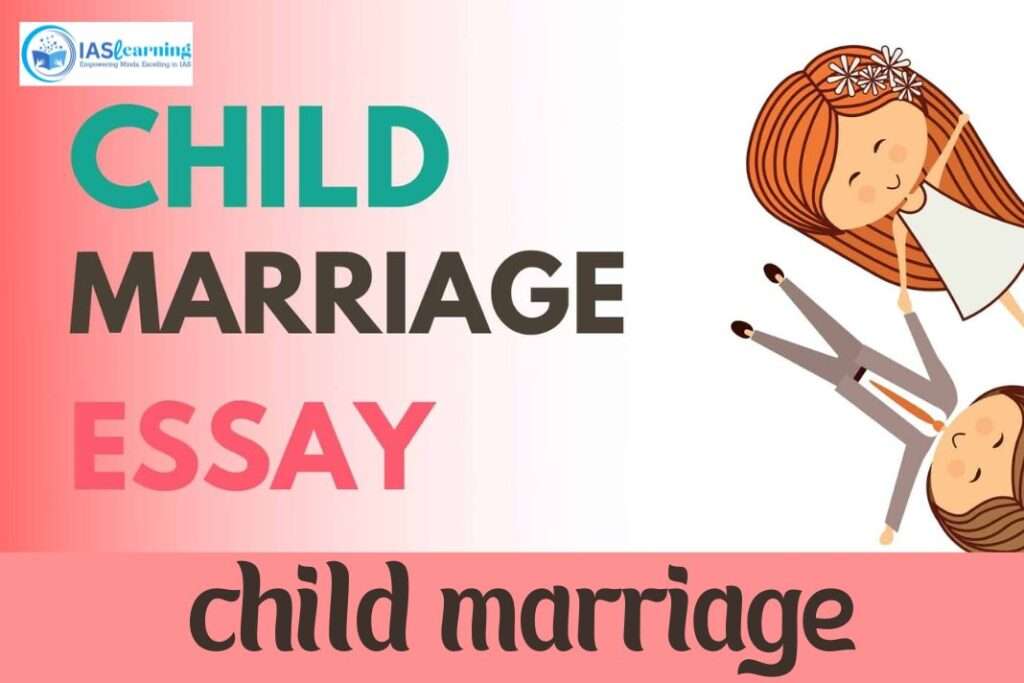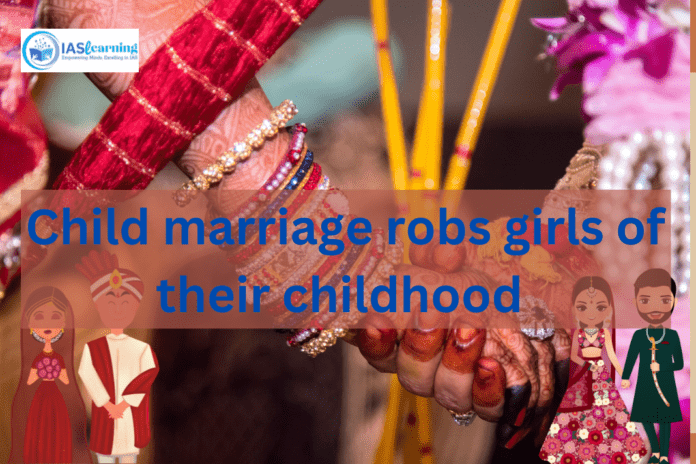Table of Contents
Introduction
Early marriage is a deeply rooted social issue in India, where young girls and boys are forced into matrimony at an age when they should be enjoying their childhood. This practice, which is often driven by cultural, economic, and societal factors, has far-reaching consequences on the lives of these children.
Background
It refers to any formal marriage or informal union between a child under the age of 18 and an adult or another child.
Despite a steady decline in this harmful practice over the past decade, child marriage remains widespread, with approximately one in five girls married in childhood across the globe. Today, multiple crises – including conflict, climate shocks and the ongoing fallout from COVID-19 – are threatening to reverse progress towards eliminating this human rights violation. The United Nations Sustainable Development Goals call for global action to end Child-marriage by 2030.

The Prevalence of Child-Marriage
It remains a significant concern in India, despite legal reforms and awareness campaigns. According to UNICEF, India accounts for 30% of the world’s child marriages. This practice is most common in rural areas, where poverty and lack of education play a significant role.
Regional Disparities
Child-marriage rates vary across different states in India. States like Bihar, Rajasthan, and Uttar Pradesh have some of the highest rates of child marriage, while states like Kerala and Tamil Nadu have made significant progress in curbing this practice.
Root Causes

Cultural Norms
One of the primary drivers of early marriage is deeply ingrained cultural norms and traditions. In many communities, marrying off daughters at a young age is seen as a way to protect their honor and safeguard family honor.
Poverty
Poverty is a significant factor pushing families to marry off their children early. The belief that marrying a daughter early will reduce the economic burden on the family is prevalent in impoverished households.
Lack of Education
The lack of access to quality education, particularly for girls, is another major contributor to child marriage. When girls are denied education, they are often seen as burdens and are married off early.
Consequences of Child Marriage

Early marriage has devastating consequences for the children involved.
Health Risks
Young brides often face serious health risks due to early pregnancies. Child mothers have a higher likelihood of experiencing complications during childbirth, and their children are at a higher risk of malnutrition and illness.
Education Deprivation
Child brides are forced to drop out of school, perpetuating the cycle of illiteracy and poverty. This lack of education limits their future prospects and opportunities.
Emotional and Psychological Toll
Child marriage takes a severe emotional and psychological toll on young brides and grooms. They are thrust into adult responsibilities, often without the emotional maturity to handle them.
Legal Framework and Initiatives
The Indian government has taken steps to combat child marriage.
The Prohibition of Child Marriage Act
In 2006, India enacted the Prohibition of Child Marriage Act, which sets the legal age for marriage at 18 for girls and 21 for boys. Violators can face imprisonment and fines.
Beti Bachao, Beti Padhao

The “Save the Daughter, Educate the Daughter” campaign aims to empower girls by improving their access to education and raising awareness about the harms of child marriage.
Conclusion
Child marriage in India is a deeply entrenched problem with severe consequences for children’s health, education, and overall well-being. While legal reforms and awareness campaigns have made strides in curbing this practice, much work remains to be done. It is crucial for society to unite in the effort to eradicate this harmful tradition and ensure a brighter future for India’s children.
FAQs
- Is child marriage legal in India? No, It is illegal in India under the Prohibition of Child Marriage Act.
- What are the health risks associated with child marriage? Child brides face higher risks of complications during childbirth, including maternal and infant mortality.
- How can we combat child marriage? Combating Early marriage requires a multi-pronged approach, including legal reforms, education, and awareness campaigns.
- Are there any success stories in curbing Early marriage in India? Yes, states like Kerala and Tamil Nadu have made significant progress in reducing child marriage rates through education and awareness.
- How can individuals contribute to ending Early marriage? Individuals can support organizations working to end child marriage, raise awareness in their communities, and advocate for girls’ education and empowerment.

